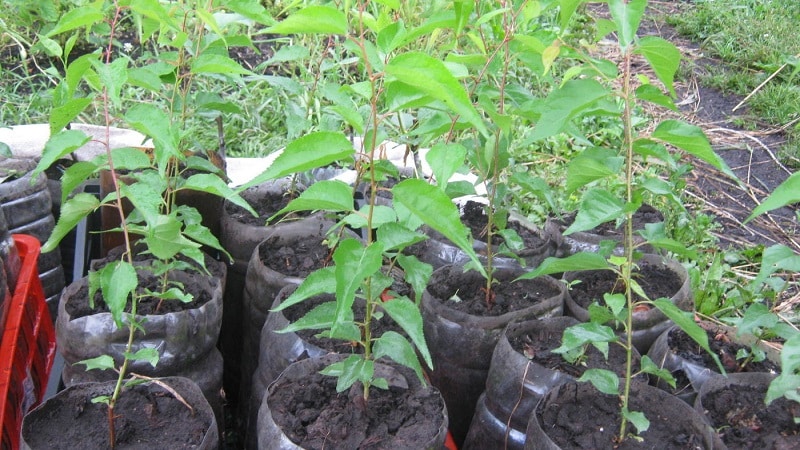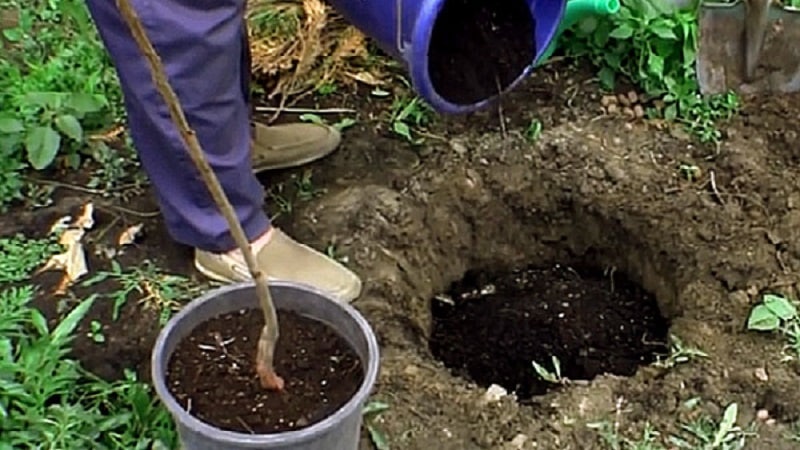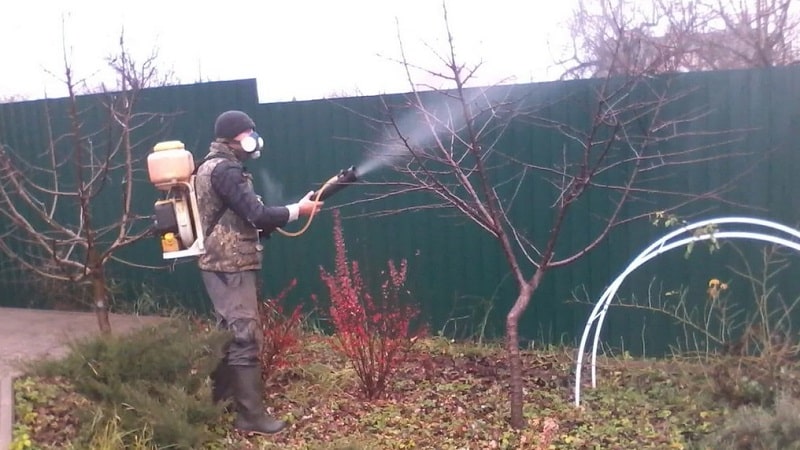A Guide to Planting Apricots in the Fall for Beginner Gardeners
Apricot is a very capricious crop. However, it is possible to grow an abundantly fruiting tree at your dacha, provided that you choose the right variety and regular care. We will tell you later about when to plant an apricot tree and what are the features of choosing seedlings and planting location.
Choosing an apricot variety for autumn planting
Apricot is predominantly a southern fruit, so it thrives in warm climates. However varieties have been developed that grow and bear fruit in temperate latitudes, for example, in central Russia and even in the Urals.
When choosing a variety for planting, they rely primarily on the geography of the area.. We offer the top 5 best apricot varieties, which are adapted to almost all latitudes, with the exception of the Far North and the arid desert.

Northern Triumph
Self-fertile early variety. It is a tall, powerful tree. The fruits are slightly elongated, with a noticeable blush on one side. The pulp has a sweet taste with almond notes. Successfully grown in central Russia.
Dessert
This variety comes from France. However, it has taken root well in cold Russia. Winter-hardy Dessert apricot is a large tree with a spherical crown.. The fruits are yellow, without inclusions or blush.
Saratov ruby
Another representative of the frost-resistant apricot. Partially self-fertile, so replanting with a pollinator is recommended, as an option, plant a bud on a tree of a different variety.The fruits have a bright orange color with a ruby side.
Academician
Variety adapted for the Far East and Amur region, frost-resistant. It is distinguished by large, elongated fruits with a characteristic “beak”. The kernels are sweet.
Alyosha
Relatively new variety, universal, early ripening. The fruits are bright orange with red splashes. The bone is large and easily separated. Grown in central Russia.
Interesting things on the site:
How to cover an apricot for the winter and prepare the tree for cold weather
Selection and preparation of seedlings
Planting material must correspond to the climatic zone in which the tree will grow and bear fruit.

When choosing an apricot tree seedling pay attention to the following nuances:
- the grafting zone should be visible on the trunk - this indicates that the tree is colored and belongs to a certain variety;
- planting a two-year-old seedling is more favorable;
- planting material should not have cracks or other damage;
- the optimal height of a seedling is 1-1.5 m;
- the presence of a developed root system - a strong main shoot and several lateral ones 20-25 cm in length.
You should not purchase a flowering or already fruiting tree.. Such a seedling will soon die.
Important! The frost resistance of a variety can be determined by the bark. The reddish or brown tint of the bark is a sign of winter-hardy varieties, and the light green trunk is characteristic of southern apricots.
Selection of location and soil
Apricots are planted in an open sunny area. The main requirement for soil for planting apricots is breathability. It is better to give preference to chernozem; sandy loam or medium loamy soils are also suitable.
Clay soils are not suitable for apricot tree growth. In such soil, the plant stops bearing fruit and dies. This is due to the fact that clay retains water, and the crop does not feel comfortable in a humid environment.

It is recommended to plant seedlings in slightly alkaline or neutral soil. Acidic soil requires preliminary liming.
Attention! If you have to plant in unsuitable soil, add a layer of humus to the bottom of the hole in sandy soil, and sand to clay soil.
When choosing a location, pay attention to the humidity level. The apricot tree is susceptible to rotting, so its location in close proximity to ponds or groundwater is unacceptable.
In cold regions, choose a place for planting where the seedling will be sheltered from the wind, for example, near buildings, fences or other trees. But the distance between them should be at least 2.5-3 m.
Read also:
Step-by-step instructions for planting peach trees in the fall
Disembarkation dates
When is it better to plant apricots - in spring or autumn? Planting time depends on the climatic characteristics of the region. In the southern regions (Kuban, Rostov region) they plant in the fall, in colder regions - in the spring, so that the root system becomes stronger during the summer.
In order for the seedling to take root after planting, suitable conditions are necessary. The air temperature is stable and not lower than +5…+6°С.
The timing varies in different regions of the country.:
- middle zone, including the Moscow region - mid or late April, late September, first ten days of October;
- Siberia and the Urals - early May and September;
- south (North Caucasus, Stavropol and Krasnodar territories, Rostov region) - the last ten days of March, all of October, early November until the first frost.
When planting apricots in the fall, it is important to plant 3-4 weeks before the first frost.. Otherwise, the fragile root system will not withstand the cold, and the tree will die. The same principle is used when transplanting a young plant to another location.

How to properly plant apricots in autumn
For planting you will need a minimum set of tools and fertilizer.
The process begins long before purchasing a seedling. Soil preparation is an important step. To create conditions for the tree to bear fruit, the soil on the site is plowed in the fall to a depth of at least 15 cm.
Step-by-step instruction:
- Holes for seedlings are dug a week before planting. Dimensions: 50-60 cm deep and 60-80 cm in diameter. A drainage made of small pebbles or broken bricks is placed at the bottom. A wooden or metal peg is driven into the center of the hole to support the seedling.
- The finished holes are filled with a mixture: chernozem - 1.5 shares, mullein - 1 share, humus - 4.5 shares. Add 60-70 g of wood ash and 50-60 g of superphosphate.
- The purchased seedling is soaked in water for a day. Then the roots are cut by 1/3 and dipped in a mash of water, clay and mullein. This will help the young plant adapt to the new environment and prevent drying out.
- A hole is made in the hole according to the size of the rhizome, the planting site is watered and the seedling is placed in the center. The root collar should protrude 4-5 cm from the ground. The rhizome is covered with earth so that no voids form between the branches. The soil is compacted from above.
- A border-side 10-15 cm high is constructed around the planting hole.
- The peg is tied to the trunk using a garden cord.
- The seedling is watered abundantly and mulched.
- When planting in autumn in the northern regions, film insulation is used.
Autumn planting provides favorable conditions for seedling hardening. If the seedling is planted on time (a month before frost), this time is enough for the plant to adapt.

Tree care after planting
Caring for a young tree includes regular watering without waterlogging.
In the first 2-3 years after planting, apricot does not need feeding, since the necessary recharge was carried out at the planting stage. At the age of 2-3 years, the tree is fed in the spring with a mixture of chicken manure, compost and peat at the rate of 300 g per 1 m², and in the fall 15 kg of organic matter, 130 g of superphosphate and 40 g of potassium chloride are added when digging.
Apricots are most often affected by fungal diseases. For prevention, trees are pruned every year, whitewashed and sprayed with fungicides in the fall.
Major diseases:
- Cytosporosis of stone fruits: small gray-brown tubercles appear on the trunk, leaves wither, and the tree dries out. At an early stage, spraying with 1% Bordeaux mixture helps.
- Bacterial necrosis. The plant becomes covered with burns and ulcers, from which gum flows. The bark becomes brown. The affected branches are removed, the sections are lubricated with a 1% solution of copper sulfate. Remove gum in a timely manner.
- Monilial burn. Leaves and young shoots turn brown and dry out. The fruits rot. The crown is treated with Topsin-M, Strobi or Topaz.
- Phyllosticosis. Brown spots with a narrow dark border on the leaves. The tree is sprayed with 3% Bordeaux mixture, the leaves are torn off.
Apricot pests:
- Aphid. It settles on the back of the leaves and sucks out the juice. The leaves curl and dry out.
- Codling moth. Appears at the end of summer and eats fruits.Overwinters in the soil of tree trunks or under the bark.
- Leaf roller. Caterpillars eat buds and leaves in the spring.
Insecticides are used to control pests: “Fitoverm”, “Fufanon”, 0.5% solution of “Entobacterin”. For the purpose of prevention, damaged fruits are promptly removed and destroyed, trunks are whitened, old bark is cleaned, and trunk circles are dug up.

The nuances of planting apricots depending on the region
Apricot is a southern crop. The plant feels most favorable in warm latitudes. In the Urals, Siberia and the middle zone, some climatic features are taken into account when planting.
In regions with harsh winters Trees are planted at higher elevations, and in the cold season they are covered with non-woven material or film insulation.
In Siberia, the Urals and central Russia Nest planting is popular, when 2-5 seedlings are placed in a hole. This method has a number of advantages: plants are protected from sunburn and frost, saving space in the garden. The diameter of the planting hole is 1-1.5 m. The seedlings are placed at a distance of 30-40 cm from each other. The process of planting in the soil is similar to planting one tree.
Planting apricots in different regions has its own nuances:
- In central Russia, due to harsh winters, the heat-loving apricot is planted on a hillock. A mound with a diameter of 2-3 m and a height of at least 70 cm is erected on the site. This allows the roots to quickly warm up. Planting apricots in lowlands is unacceptable.
- In the Moscow region, apricots are also planted on a hill, but due to groundwater, a slate or metal base is placed at the bottom of the planting hole.
- The most suitable planting method for the Urals and Siberia is with seeds. Several pieces are placed in the holes and after germination the seedlings are cared for.
Conclusion
Apricot is a heat-loving plant, but this does not prevent it from being cultivated even in the northern regions. Compliance with planting and care rules, protection from frost in winter and prevention of diseases and pests is a guarantee of a bountiful harvest in any climatic conditions.